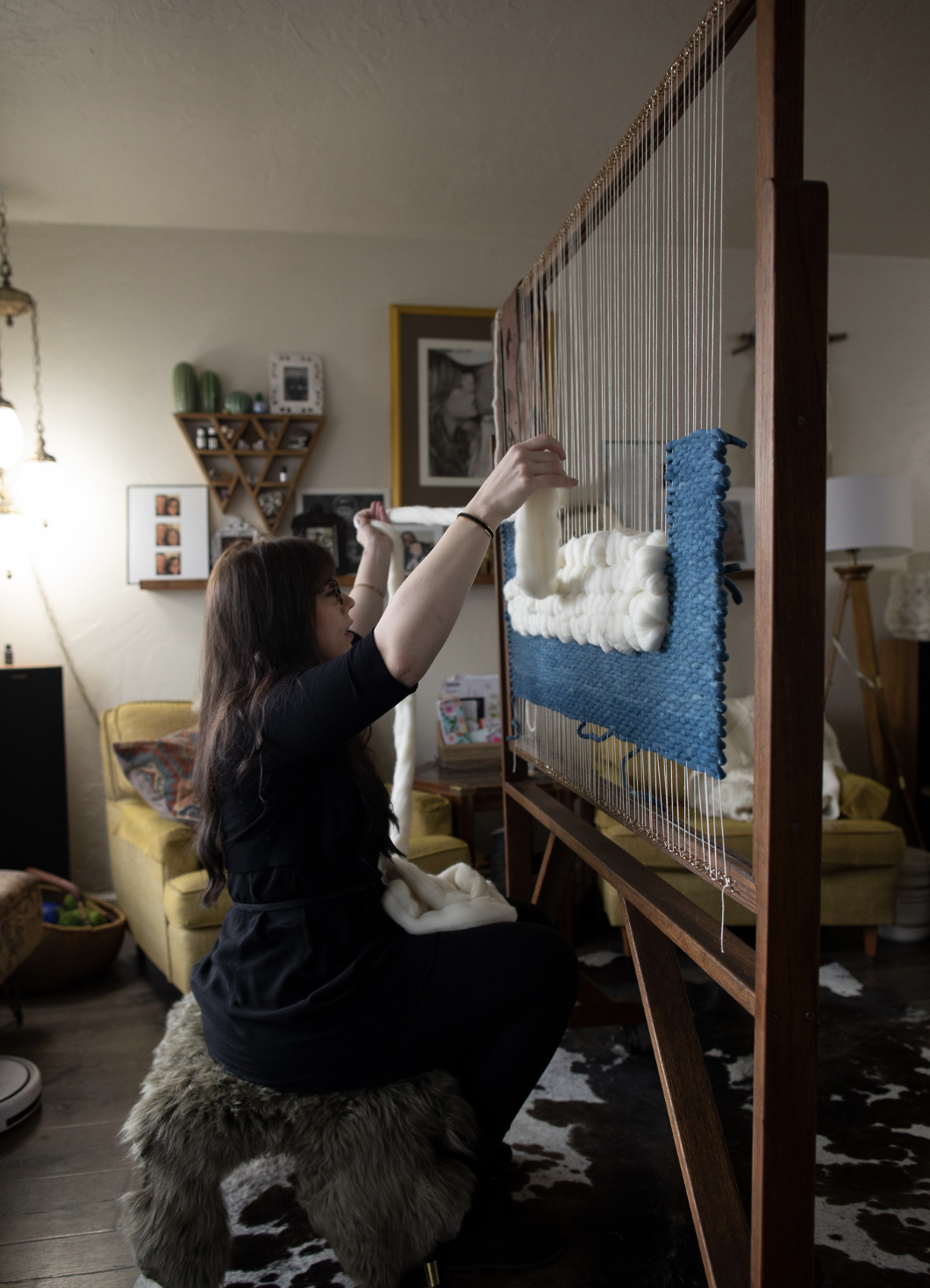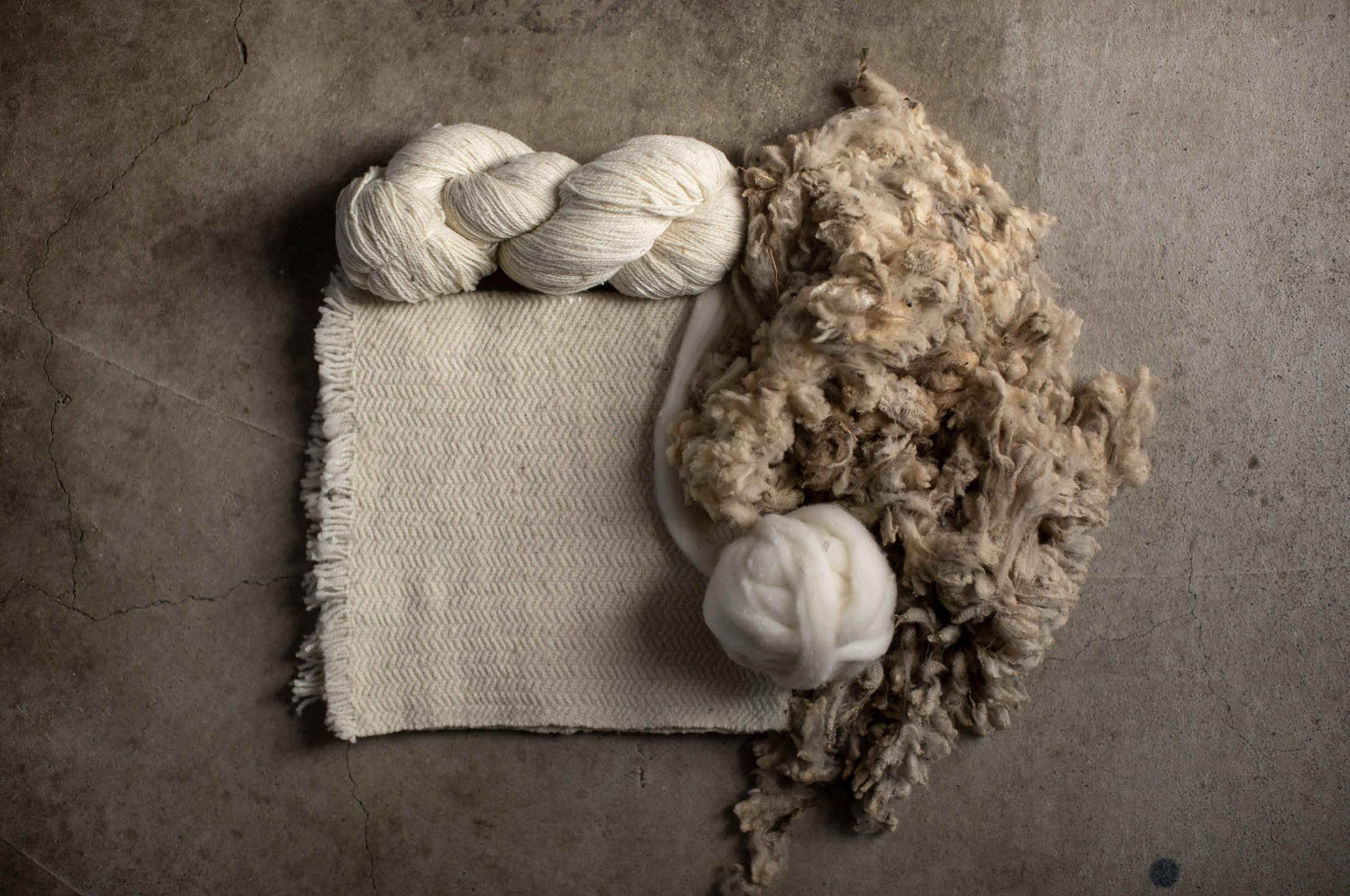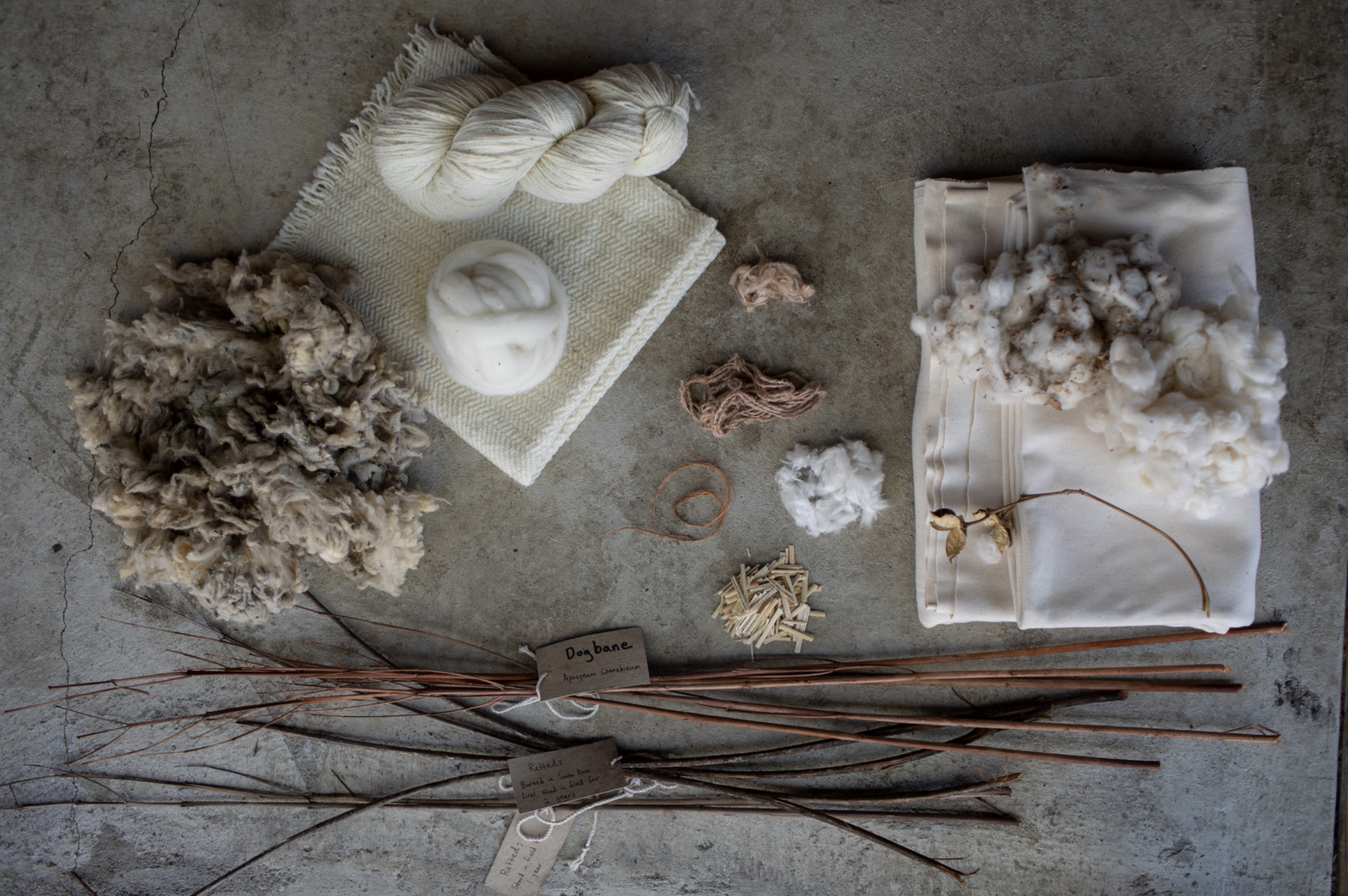
Fiber artists and designers bring exquisite creations into the world. From apparel and rugs to wall hangings and baskets, the pieces brought to life by skilled artisans make their customers’ lives more beautiful as well as more practical. Every piece tells a story.
Fiber artisans have the opportunity to support local fiber farmers and climate-benefitting land stewardship, while enriching the stories their products tell by being selective about the type of fiber they work with and how the fiber is produced. All fiber is not created equal, and a spectacular world of high-quality, environmentally beneficial fiber exists for artisans who seek it.
Why Should I Be Selective About My Fiber?
Similar to food systems, fiber systems have the ability to enrich or harm the land, animals, and people they impact. Artisans can support beneficial fiber systems by selecting fiber from producers who are mindful of the outcomes of their work and consistently taking steps to improve their impact.
Think about the following when you’re choosing your fibers and textiles:
- What is this fiber made from? Many popular fibers contain petroleum-based materials, which are harmful to the environment at every step of their creation and use. Purchasing natural fibers and textiles is the best way to avoid these synthetic materials.
- How was this fiber produced? Fibers and textiles made from natural materials aren’t all created equally. Climate Beneficial™ fibers are produced using agricultural practices that increase the amount of carbon that is drawn out of the atmosphere. So, not only are these fibers high-quality, they’re also better for people and the planet.
- Was this fiber dyed? (And if so, how?) Artificial dyes that are prominently used in the manufacturing of fiber products are produced from detrimental chemicals and metallic elements, which regularly find their way into water systems threatening the health of the humans, animals, and natural spaces nearby. When selecting fibers or textiles to work with, consider looking for either undyed or naturally dyed materials.
- Where was this fiber produced? Fragmented global manufacturing systems have resulted in many fibers and textiles being shipped long distances to their point of use. When it’s possible, seek materials that were produced close to your home.
By being more selective in their fiber choices, artists and artisans can benefit their communities and the environment. Fortunately, many producers, artisans, and consumers are becoming more informed and changing their practices, meaning better textile choices are available.

What Is Climate Beneficial Fiber?
Natural fibers such as wool, cotton, alpaca, and flax linen can be grown and raised in ways that restore ecosystem health and maximize atmospheric carbon drawdown, helping stabilize our climate.
The Climate Beneficial™ Verification program and label support Northern and Central California farmers and ranchers in landscape-level stewardship that centers their work to build healthy soil within our fibershed region. Fibershed focuses on engaging producers and developing financial and technical support to enhance the drawdown of carbon from the atmosphere. By connecting fiber producers with designers and markets that value ecosystem services, the Climate Beneficial program can grow materials and supply chains rooted in verified practices that:
- Increase soil organic carbon levels
- Enhance biodiversity by providing habitat for pollinators, birds, and other species
- Improve the water-holding capacity of the soil
- Restore healthy ecosystems, from the soil microbiome to nutrient cycles
- Provide measurable climate benefits, quantified by open-source data tools
Choosing Climate Beneficial Verified fiber connects your garment or textile goods directly to practices that regenerate soil carbon, and so much more.
How Will Using Climate Beneficial Fiber Benefit Me?
A healthier environment benefits everybody, so increasing the use of Climate Beneficial fiber across industries is a universal win.
Beyond climate outcomes, tapping into your local fibershed strengthens your community. By supporting nearby producers who favor carbon farming practices, you’re working to keep money within your community, and you’re casting your vote for safer agriculture in your area. You’re getting to know the people behind your products, allowing you to better understand the impact of your work. You’re also likely getting access to very high-quality fiber.
Finally (but importantly), fibers produced sustainably and thoughtfully can tell truly rich stories. From the farms on which the fiber animals are raised and the fields in which cotton and flax are grown, to the natural dyes implemented and the people working together to build regional fiber systems, the stories behind regional natural fibers can become part of your products’ stories, too. Imagine being able to market your wares by telling these stories, drawing customers deeper into the history of your creations.
Check out 10 innovative makers who are already using Climate Beneficial fibers in their products!

How Can I Find Climate Beneficial Fiber?
If you’d like to source fiber from Northern California Fibershed Producers online, you can search the Fibershed Producer Directory, which will allow you to search for yarn, raw fiber, and more, or you can visit the Fibershed Marketplace, an online store cooperatively owned and managed by Fibershed Producer members.
In 2020, the Climate Beneficial™ Fiber Pool was created in order to provide an economic and ecological response to the impacts that Covid-19 placed on our fine fiber ranching community. Artisans interested in sourcing fiber from the Climate Beneficial Fiber Pool can find more information here.
We also welcome local independent brands and designers to reach out to us for assistance with fiber sourcing.
Not in the Northern California Fibershed region? We’re steadily working to support more fibersheds throughout the U.S. and the world. You can see if your area has established an official fibershed on our affiliate directory. These affiliate fibersheds can be reached to answer questions about how to source natural fiber in your community.
If your area doesn’t currently host a Fibershed affiliate, you may still be able to do a little research to find local fiber producers whose practices align with your values. You can also attend local markets, which often feature small-scale producers.
Recently, we launched the newly created “Toolkit for Fibersheds & Brands: Creating a Conversation for a New Era of Design”, written by our colleagues, Amy DuFault and Sarah Kelley. The 44-page toolkit covers roles that fibersheds and brands can play as they interact for the first time, develop a project together, and gauge success. Eight case studies give both brands and fibersheds snapshots from past and present collaborations as well as lessons learned. We even included legal templates to help hold everyone accountable.
